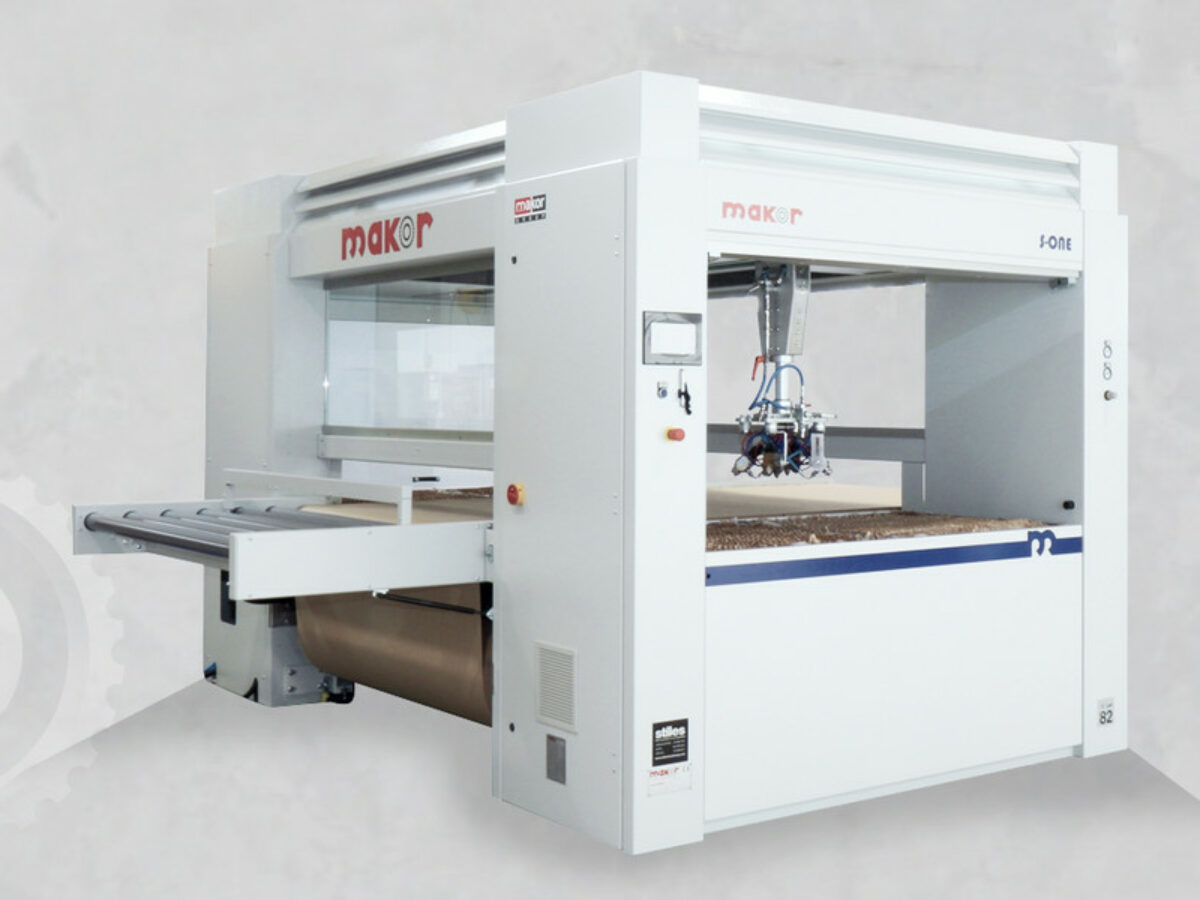All custom kitchen manufacturers should consider automatic spraying technologies

By Paul Mason – Technology Advisor
I’ve been working on a range of automation and robotics projects to help SMEs maximise productivity and gain efficiencies using technology.
A recent example is a kitchen manufacturer who has been spending considerable time and energy sealing their timber panels before they are vinyl wrapped, or painting/coating the panels one at a time using a manual operation. Since customers typically demand custom-designed kitchens, these timber panels are rarely the same size, shape and finish which causes headaches for the manufacturer when trying to automate this painting process.
A traditional approach to automating spray painting is the use of large industrial robots. These give a high degree of flexibility as robots can be tailored to suit each application depending on the size and specifications of the workpiece and the end-to-end process required. In many cases industrial robots can be configured to paint a range of different predefined products and include numerous colour changes in the process.
A downside of these robot solutions are the high costs involved, not just in the robot capital expense and setup, but in the infrastructure requirements such as the ventilated and temperature-controlled painting booths, and other equipment needed to feed workpieces in and out of the booth. Costs can be reduced through purchasing refurbished industrial robots, and there are some local robot integrators that now provide this option.
However, self-contained dedicated spray paint machines are now becoming a more affordable option for smaller SMEs. Although this technology is not yet widely adopted across Australia, automated spray machines are able to receive panels of all sizes via a small conveyor, in some cases automatically detecting the panel dimensions, then apply the spray coat as required and exit the panel out the other side. There are many variants of this type of machine – some with auto paper dispensers under the panels, different quantity and configuration of spray heads, different extraction methods, and even some that will automatically feed in trays of panels and re-stack them on finishing racks after the spraying is complete.
The advantages of automation in painting applications is not just better utilization of available resources and relieving workers of dirty and dangerous tasks, but in many cases the improved and repeatable process control has significant flow on benefits. These can include optimised paint flow volumes, consistent air pressure and spray fan control, controlled area of application, controlled gun target distance and velocity, consistent multiple coats without subjective human visual control, improved spray gun flexibility by allowing the gun to spray the underside of products, continual improvement and optimization of the process, and repeatable spray finish for every workpiece.
To get a better idea of available automatic spray-painting machines in the market, there are a range of YouTube videos on the subject which can show potential buyers the required infrastructure, set up, operation and options relating to the different machines and systems.
Automated machines dedicated to timber panel spraying are however not produced locally nor widely supported across Australia, so interested buyers need to do their own product research and weigh up the large range of options offered by mostly European and Chinese manufacturers.
Picture: The Makor Group/automated spraying system
This article has been republished with the author’s permission. See the original version here.
Subscribe to our free @AuManufacturing newsletter here.
Topics Manufacturing News
@aumanufacturing Sections
Analysis and Commentary Awards Defence Manufacturing News Podcast Technology Videos










